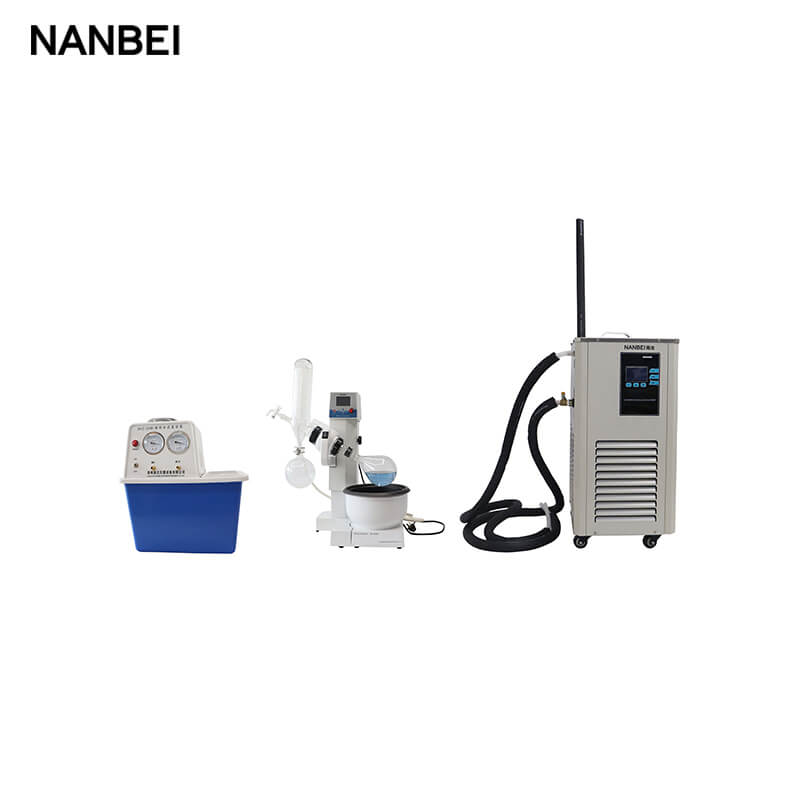 Mobile: +86 15890068607
Mobile: +86 15890068607
 Email: nanbeiinstrument@nanbei-china.com
Email: nanbeiinstrument@nanbei-china.com
 Mobile: +86 15890068607
Mobile: +86 15890068607
 Email: nanbeiinstrument@nanbei-china.com
Email: nanbeiinstrument@nanbei-china.com
The rotary evaporator is suitable for small and medium-sized experiments, and is an essential instrument for the laboratory distillation, concentration, crystallization, purification, separation and other experiments. It is mainly used in the pretreatment process of food, environment and other samples, and its main function is to concentrate and convert solvents.
I. Operating procedures
1. Connect the hose to the condensate faucet, and connect the vacuum hose to the vacuum pump.
2. First pour water into the heating tank. It is better to use pure water, and tap water should be left for 1-2 days before use.
3. Adjust the angle of the host of laboratory rotary evaporator.
4. Connect with condensed water, turn on the power, connect the evaporating bottle with the host (don't let go), turn on the vacuum pump to reach a certain degree of vacuum and release hands.
5. Adjust the height of the host.
6. Turn on the speed control switch, and the green light is on, then adjust the speed knob on the left side, and the evaporation bottle starts to rotate. Turn on the temperature adjustment switch, and the green light is on, then adjust the temperature adjustment knob on the left side, and the heating tank will start automatic temperature control heating, and the instrument enters the trial operation. Once the temperature and vacuum reach the required range, the solvent can be evaporated to the collecting bottle.
7. After the evaporation, first turn off the speed control switch and temperature control switch, press the lower lever to raise the host, then turn off the vacuum pump, and open the vent valve above the condenser to communicate with the atmosphere, remove the evaporation bottle, and the evaporation process is over.

II. Matters needing attention
1. Glass parts of chemical rotary evaporator should be handled with care, and must be washed and dried.
2. The heating tank should be filled with water first and then energized, and dry heating without water is not allowed.
3. A small amount of vacuum grease should be evenly applied to the grinding instruments used before installation.
4. Precious solutions should be simulated first to confirm the applicability of the instrument before normal use.
5. The precise water temperature is directly measured with a thermometer.
* HOT ARTICLE
Welcome to the official website of the Nanbei Group *